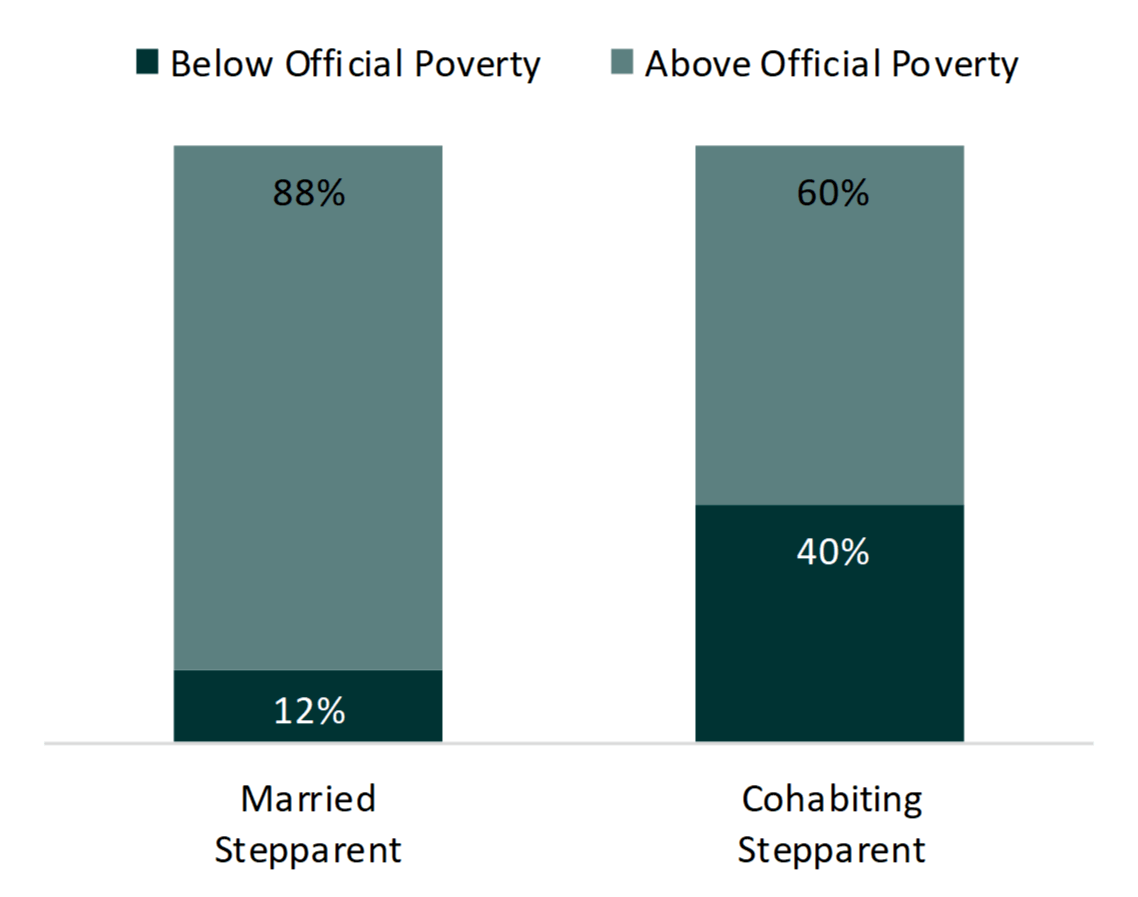American Children's Family Structure: Stepparent Families
Family Profile No. 16, 2017
Authors: Kasey J. Eickmeyer
High levels of remarriage and repartnering mean that a substantial share of children live in a stepfamily (i.e., children residing with one biological or adoptive parent and the parent's spouse or partner) (Manning, 2015; Sweeney, 2010). Using recent data from the 2010 and 2016 Current Population Survey (CPS), we found that nearly one in ten (9%) children was living with a stepparent at both time points (Figure 1, FP-17-15).
This profile, the second in a series on children's family structure in 2016, focuses on children living in a stepfamily. We distinguish between children living in cohabiting stepparent and married stepparent families. Just over half (55%) of children in stepfamilies were living with a biological parent and his/her spouse, and 45% were living with a biological parent and his/her cohabiting partner (Figure 1).
Figure 1. Share of Children Living with Cohabiting or Married Stepfamilies

Parental Educational Attainment
- In 2016, children in stepfamilies typically lived with a biological parent who had some college education.
- Children who lived in married stepfamilies had parents with higher levels of education, on average, than children in cohabiting stepfamilies. Specifically, one-third (33%) of parents in married stepparent families had at least a Bachelor's degree compared with 20% of cohabiting stepparents.
Figure 2. Variation in Parental Educational Attainment Among Children in Stepparent Families, 2016

Racial & Ethnic Composition
The racial/ethnic composition of children in married and cohabiting stepfamilies was similar in 2016.
- Slightly greater shares of children in cohabiting stepfamilies were Black (16%) or Hispanic (25%) than children in married stepfamilies (11 % and 22%, respectively).
Figure 3. Variation in Racial & Ethnic Composition Among Children in Stepparent Families, 2016

Measures of Poverty
- Most children living with stepparents were living above the poverty level in 2016.
- The share of children living in poverty with cohabiting stepparents (40%) was three times higher than those living with married stepparents (12%).
- Using the supplemental poverty measure (U.S. Census Bureau), which accounts for both cohabiting parents' incomes and noncash benefits and is represented by the dotted line, we found the percentage of children with cohabiting stepparents living in poverty in 2016 was halved, from 40% to 20%.
Figure 4. Poverty (Official and Supplemental) Among Children in Stepparent Families, 2016

Health Insurance Coverage
- Almost all children (95-96%) living in stepfamilies had health insurance in 2016.
- Children living with married stepparents most often were covered by private insurance (57%), whereas only 42% of children living with cohabiting stepparents had private insurance.
Figure 5. Health Insurance Coverage Among Children in Stepparent Families, 2016

*For more information on the history of the poverty measure, please visit the United States Census Bureau's website link.
Data Sources
- Flood, S., King, M., Ruggles, S., and Warren, J.R. Integrated Public Use Microdata Series, Current Population Survey: Version 4.0 [dataset]. Minneapolis: University of Minnesota, 2015. http://doi.org/10.18128/D030.V4.0.
References
- Manning, W. D. (2015). Cohabitation and child wellbeing. The Future of Children, 25(2), 51-66. Retrieved from http://www.jstor.org/stable/43581972
- Sweeney, M. M. (2010). Remarriage and stepfamilies: Strategic sites for family scholarship in the 21st century. Journal of Marriage and Family, 72(3), 667-684. doi:10.1111/j.1741-3737.2010.00724.x
Suggested Citation
- Eickmeyer, K. J. (2017). American children's family structure: Stepparent families. Family Profiles, FP-17-16. Bowling Green, OH: National Center for Family & Marriage Research. https://doi.org/10.25035/ncfmr/fp-17-16
This project is supported with assistance from Bowling Green State University. From 2007 to 2013, support was also provided by the U.S. Department of Health and Human Services, Office of the Assistant Secretary for Planning and Evaluation. The opinions and conclusions expressed herein are solely those of the author(s) and should not be construed as representing the opinions or policy of any agency of the state or federal government.
Updated: 04/06/2021 02:09PM


